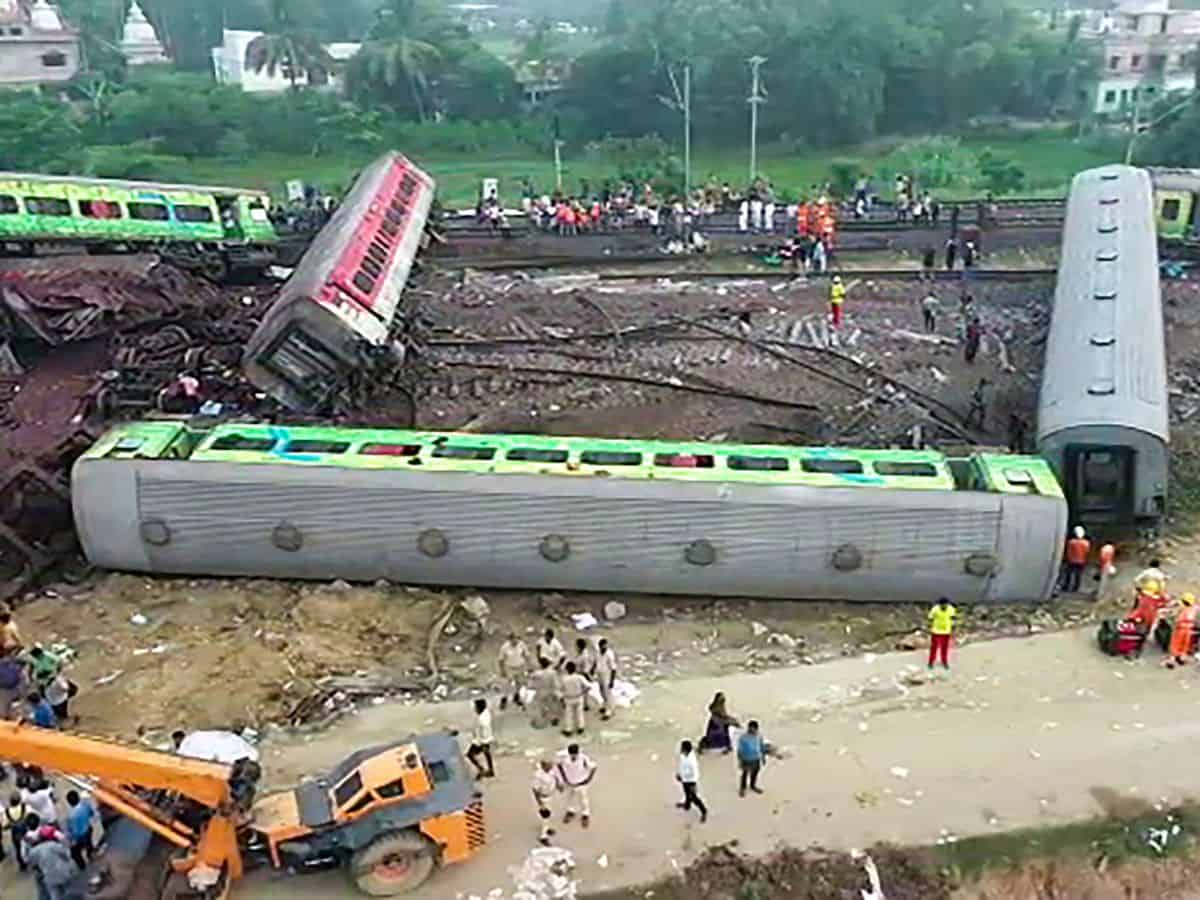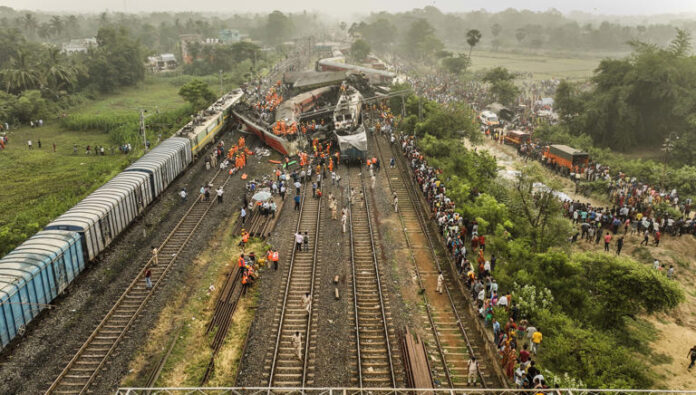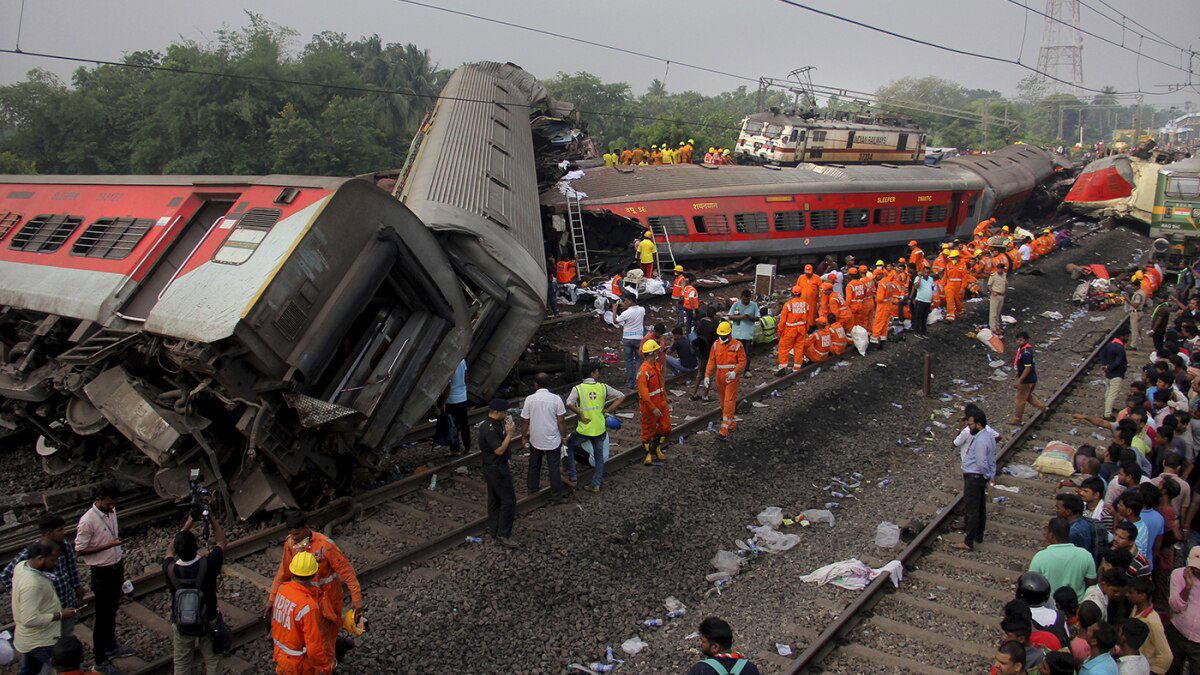In the aftermath of a devastating triple train collision in Odisha’s Balasore district, the Indian Army swiftly mobilized troops, and the Air Force deployed helicopters for relief and rescue operations to aid the injured passengers. As initial reports emerged from the railway signaling control room, it was revealed that the ill-fated Coromandel Express had mistakenly taken the wrong track just moments before the tragedy unfolded. An anonymous senior railways official disclosed that the Chennai-bound train had veered onto the loop line instead of the intended main line near Bahanagar Bazar station on Friday evening.
Aerial footage captured the heartbreaking scene of three trains entangled in the aftermath of the collision, claiming the lives of at least 238 passengers. The video footage from the signalling control room in the Kharagpur division depicted the four railway tracks, including two main lines and two loop lines. The ill-fated 12841 Shalimar-Chennai Coromandel Express, traveling at approximately 127 km per hour, collided with a stationary goods train parked on the loop line, resulting in its derailment on the main line.
Within moments of the initial collision, the Howrah-bound Yashwantnagar Express, approaching from the opposite direction, crashed into the Coromandel Express. Loop lines are typically constructed within station areas, such as Bahanagar Bazar station, to facilitate smoother railway operations by accommodating additional trains. These loop lines usually span a length of 750 meters to accommodate full-length goods trains with multiple engines. In recent times, Indian Railways has been encouraging the construction of loop lines measuring approximately 1500 meters, which doubles the existing loop line length.
The exact cause of the incident, whether due to human error or technical malfunctions, remains unclear. Initial assessments suggest that human error may have played a role, as the Coromandel Express erroneously diverted onto the wrong track shortly before the tragedy occurred. However, a retired railway official from the East Coast Railway zone hinted at potential technical glitches and signal problems.
Unforeseen Tragedy Strikes: The Devastating Odisha Train Disaster and the Fatal Mishap of Coromandel Express
The former official, speaking on the condition of anonymity, stated, “Although the goods train was stationed on the loop line of the railway station, as indicated by the signal panel in the station manager’s office, it is possible that the rear carriages of the goods train were still physically present on the main line when the Coromandel Express approached at a speed of 127 km per hour.”
The tragic train collision has raised serious concerns and ignited a sense of urgency to investigate the incident thoroughly. The railway authorities, along with relevant authorities, are working diligently to unravel the truth behind this heart-wrenching disaster and determine the contributing factors. As the nation mourns the loss of precious lives, the focus now shifts to identifying measures to prevent similar incidents and ensure the safety and well-being of passengers on India’s vast railway network.
In the wake of a catastrophic triple train collision in Odisha’s Balasore district, the Indian Army swiftly deployed troops, while the Air Force mobilized helicopters for relief and rescue operations to assist the injured passengers. Initial reports from the railway signaling control room confirmed that the ill-fated Coromandel Express had taken the wrong track just moments before the tragedy unfolded. An unidentified senior railways official revealed that the Chennai-bound train had mistakenly diverted onto the loop line instead of the intended main line near Bahanagar Bazar station on Friday evening.
Heartbreaking aerial footage captured the aftermath of the collision, with three trains entangled and at least 238 passengers losing their lives. Video footage from the signaling control room of the Kharagpur division showcased the four railway tracks, comprising two main lines and two loop lines. The ill-fated 12841 Shalimar-Chennai Coromandel Express, traveling at an approximate speed of 127 km per hour, collided with a stationary goods train parked on the loop line, causing it to derail onto the main line.
Unforeseen Catastrophe: The Devastating Odisha Train Disaster Leaves Tragedy in its Wake
In a matter of minutes following the initial collision, the Howrah-bound Yashwantnagar Express, approaching from the opposite direction, collided with the Coromandel Express. Loop lines are typically constructed within station areas, such as Bahanagar Bazar station, to facilitate smooth railway operations by accommodating additional trains. These loop lines are generally around 750 meters long to accommodate full-length goods trains with multiple engines. Indian Railways has been actively encouraging the construction of longer loop lines, around 1500 meters in length, to enhance operational efficiency.
The exact cause of the incident, whether it was a result of human error or technical malfunctions, remains uncertain. Preliminary findings suggest that human error may have played a role as the Coromandel Express mistakenly veered onto the wrong track shortly before the tragedy unfolded. However, a retired railway official from the East Coast Railway zone hinted at the possibility of technical glitches and signal issues.
Speaking on the condition of anonymity, the former official stated, “Although the goods train was positioned on the loop line of the railway station, as indicated by the signal panel in the station manager’s office, it is possible that the rear carriages of the goods train were still physically present on the main line when the Coromandel Express approached at a speed of 127 km per hour.”


